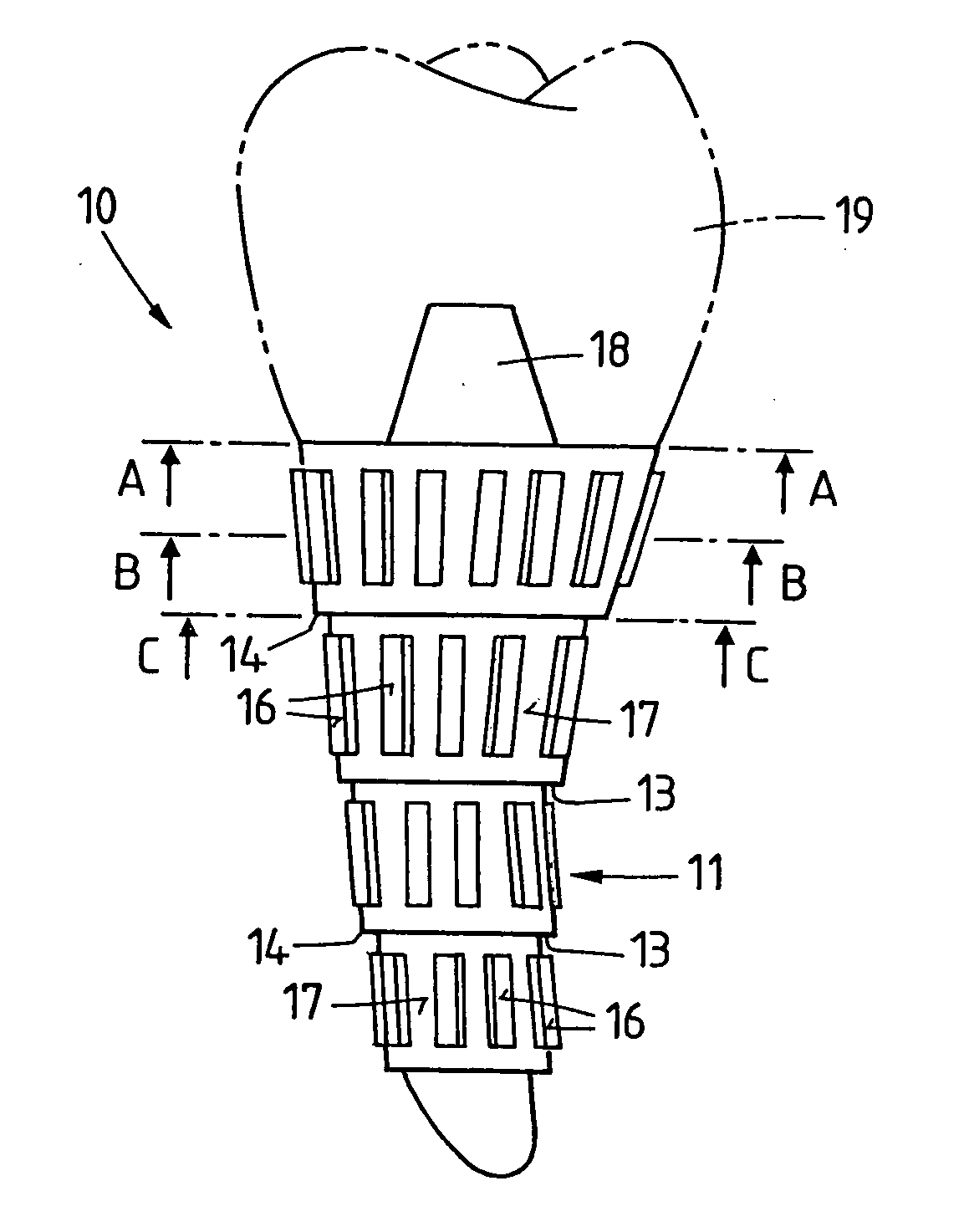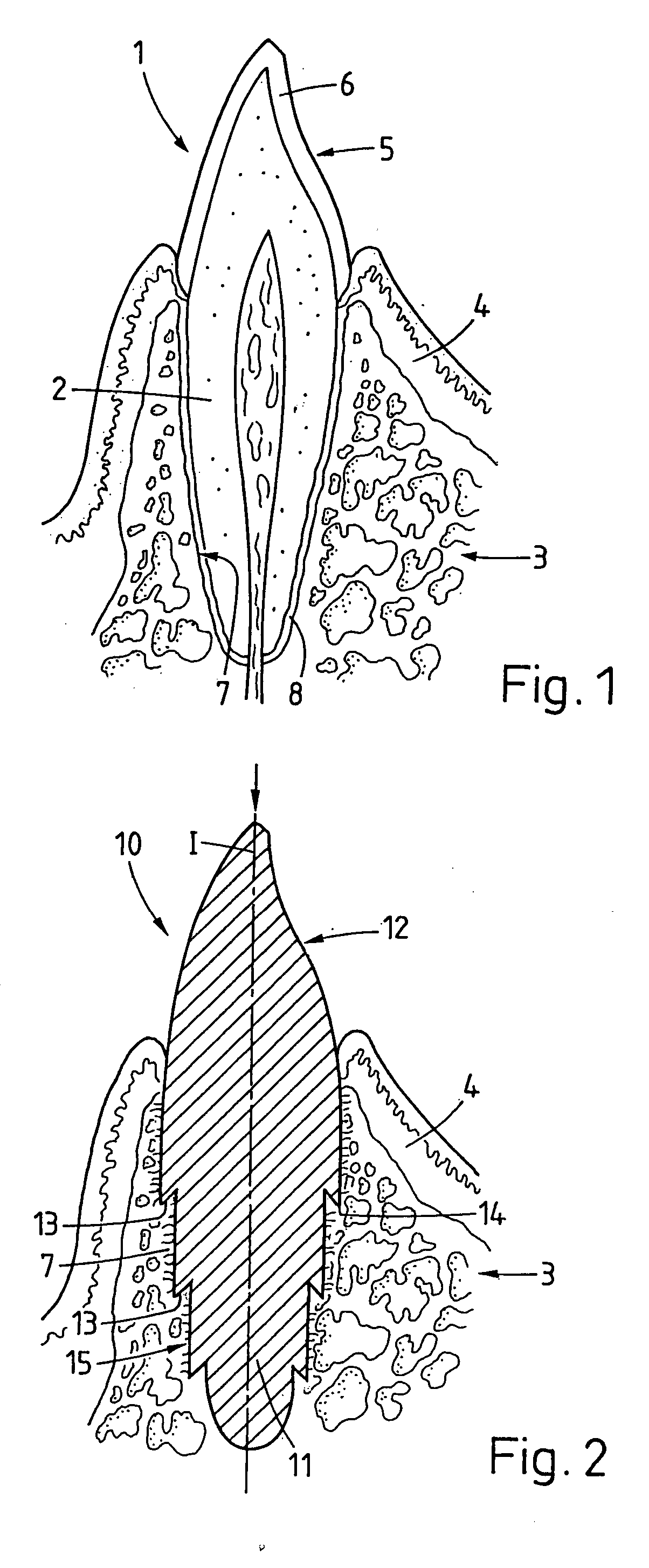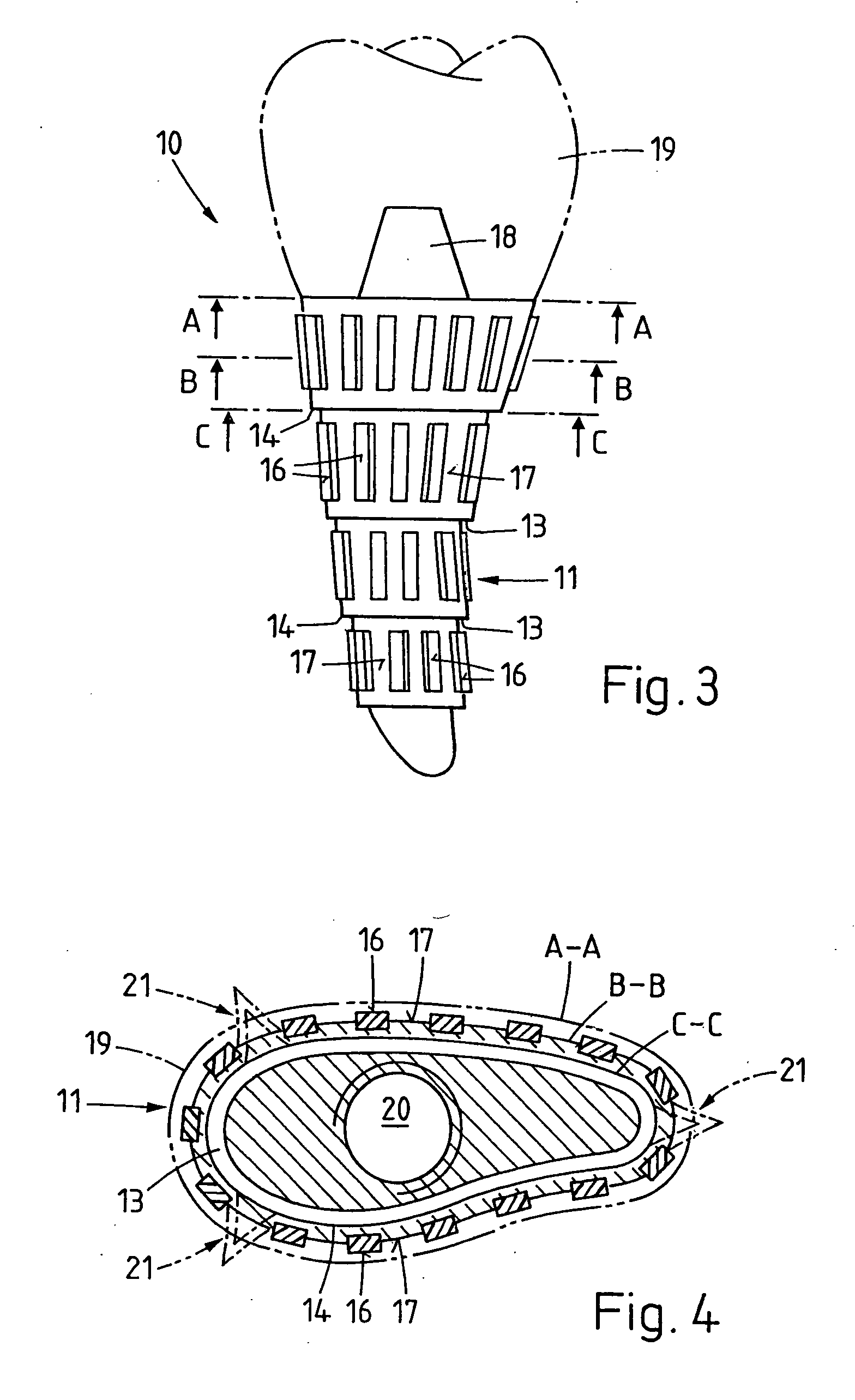Implant that can be implanted in osseous tissue and method for producing said implant corresponding implant
a technology of implanted implants and bone tissue, applied in the field of medical technology, can solve the problems of preventing the successful integration of implants in bone tissue, affecting the stability of implants, and affecting the stability of implants, and achieves the effect of strong long-term anchoring of implants
- Summary
- Abstract
- Description
- Claims
- Application Information
AI Technical Summary
Benefits of technology
Problems solved by technology
Method used
Image
Examples
Embodiment Construction
[0063]FIG. 1 shows in section across the jaw ridge a natural tooth 1, whose root 2 is ingrown in a jawbone 3. The jawbone 3 is covered by gums 4 (connective tissue and skin). The crown 5 protrudes from the jawbone and gums 4 and is coated with a layer of dental enamel 6, while the interior of the crown 5 and the root 2 consist of dentine. The root 2 is located in an alveolus (tooth socket) in the jawbone, wherein the bone tissue of the alveolus wall 7 (alveolar bone), compared with bone tissue further removed from the root 2, usually has a greater density and therefore a superior mechanical stability. Between the alveolus wall 7 and the root 2 lies the tooth membrane 8 containing collagen fibres by which the root 2 is attached to the alveolus wall 7. The fibres carry the tooth and couple forces acting on the tooth laterally into the bone tissue. On extraction of the tooth, the tooth membrane is destroyed. It does not regenerate.
[0064]FIG. 2 shows, in section similar to FIG. 1, an i...
PUM
 Login to View More
Login to View More Abstract
Description
Claims
Application Information
 Login to View More
Login to View More - R&D
- Intellectual Property
- Life Sciences
- Materials
- Tech Scout
- Unparalleled Data Quality
- Higher Quality Content
- 60% Fewer Hallucinations
Browse by: Latest US Patents, China's latest patents, Technical Efficacy Thesaurus, Application Domain, Technology Topic, Popular Technical Reports.
© 2025 PatSnap. All rights reserved.Legal|Privacy policy|Modern Slavery Act Transparency Statement|Sitemap|About US| Contact US: help@patsnap.com



